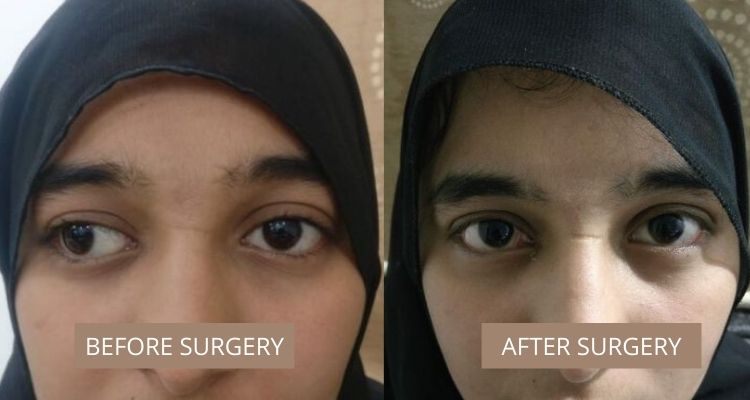

Exotropia is a type of squint or strabismus or eye misalignment. In exotropia, the eye deviates away from the nose. It usually appears in older children and gradually worsens. Sometimes children are born with this type of squint. In the first picture, the right eye is deviating outwards whereas in the second picture it's the left eye.
Most children with exotropia have intermittent exotropia. Intermittent indicates that your child’s eyes are not always turned outward. At certain times your child’s eyes may be straight and at other times an eye may drift outward. The outward drifting is often most apparent when your child is sick, tired, or inattentive, particularly in the evening.
In the majority of children, this outward drifting occurs primarily on distance viewing. Therefore, when your child looks directly at you up close the outward turning of the eye may not be visible.
Children may develop double vision when his/her eye drifts outward though this is not very common. At first, the child may close the drifting eye to prevent double vision. This double vision may also induce the child to straighten his/her eyes. As a child’s eye drifts outward more frequently he/she will become used to this misalignment. In effect, the child will “turn off” the drifting eye to prevent double vision. This will lead to more frequent outward drifting of the eyes. Finally, children may completely lose the ability to use the eyes together and become constantly exotropia.
As long as the child is squinting sometimes we are not worried about what is known as the Lazy eye or Amblyopia. If the squint becomes constant and if the child is below the age of 6-8 years there is always a risk of the child developing amblyopia.
Causes of exotropia are mostly unknown. Children with a family history of the disorder are more likely to get them. They are also common in children who have other systemic disorders.
If a child’s eye only turns outward occasionally, no treatment may be necessary. It is important to notice how often the child’s eyes turn out. If this outward turning begins to occur more frequently (more than 50% of the waking hours), surgery is indicated.
Many children with intermittent exotropia will eventually require surgery. Strabismus surgery may be indicated if the child’s eyes frequently turn outward. Surgery would also be indicated if the child’s control over his/her ocular misalignment is clearly worsening and for cosmetic reasons. Also, the squint may not be very visible but if the child is complaining of headaches or eyestrain then she may need to undergo surgery.
During surgery, the extraocular muscles, which control the position of the eyes, are weakened or strengthened.
Strabismus surgery is usually successful. In fact, approximately 80% of children will require only one operation to obtain a satisfactory result.
After surgery, it is frequent and often desirable for a child’s eyes to be turned inwards slightly. This will usually resolve after a few weeks or months. Sometimes drops or glasses will be used to straighten eyes that are turned inwards after surgery.
Please note that in some children an eye may begin to drift outwards again months or years after an initially successful surgical procedure. Therefore, it is important to continue to observe your child’s eye position.